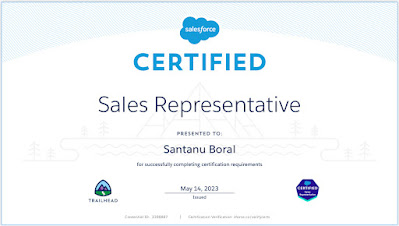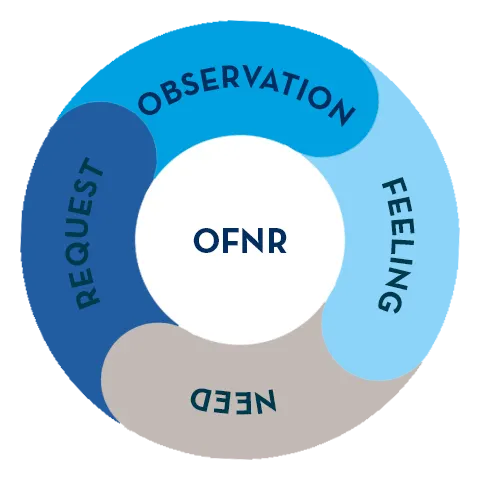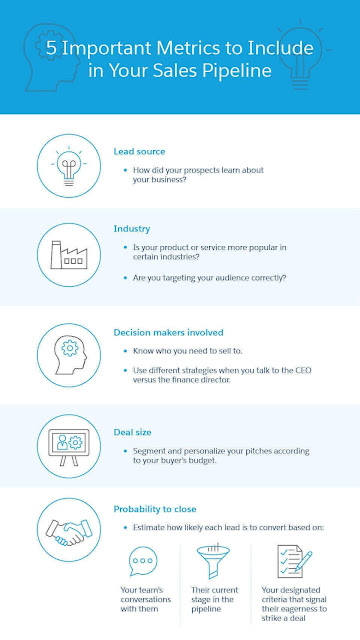Motivation behind this
Salesforce has announced Sales Representative certification and it is available from 4th May, 2023. Being on Salesforce platform more than a decade and worked various roles including pre-sales engineering which helps me to target for this exam and clearing with flying colors.
Btw, this is my 100th blog post which motivates me to pen down right away.
Sharing my tips to prepare and pass this certification for trailblazers.
Exam Outline
Content: 60 multiple-choice / multiple-select questions and 5 non-scored questions.
Time allotted to complete the exam: 105 minutes
Passing score: 70%
Registration fee: USD 200 plus applicable taxes as required per local law
Delivery options: Proctored exam delivered onsite at a testing center or in an online proctored environment.
References: No hard-copy or online materials may be referenced during the exam
Prerequisite: None
Topics
Topics | Weighting |
Planning | 21% |
Customer Engagement | 15% |
Deal Management | 37% |
Pipeline Management | 12% |
Forecasting | 6% |
Customer Success | 9% |
Preparation
Exam Structure
For each question there are only 3 options and only one option to choose. As there are no multi-choice answers, so it will be less confusing on choosing the answers.
Few Important points to cover for exam
Though this certification doesn't have any pre-requisite but if any one clears Sales Cloud certification and Business Analyst certification, then it will be easy for them to pass. If we understand following concepts it will be easy to pass the exam.
Planning
Sales Territories and Forecasting
- Territory Management Best practices
- Divide territories based on company goals
- Balancing territories - No of companies, Geo, Size of companies, Propensity to buy, Industry
- Plan your territories in Salesforce way
- Plan for growth
- Avoid Disruption
- Lessen Ramp time
- Lead with Data
- Be Fair
- Always adjust
- Track Most important Metrices
- Pipeline
- Salesforce’s number one metric is ACV (annualized contract value), which is the sum of new or add-on opportunities
- Measure Monthly
- Managing Territories in Salesforce
- Model your territories
- Create a territory hierarchy
- Define assignment rules
- Promote team selling
- Forecast with Precision
- Pipeline is a comprehensive view of a rep’s open opportunities.
- Forecast is a subset of the pipeline and includes just those deals expected to close in a certain period, like this quarter
- Define your Sales Process - establish consistent terminology for your sales cycle
- Inspect forecast constantly
- Does the prospect have a budget?
- Have their executives signed off?
- Are all key decision makers identified and engaged?
- Have we effectively quantified ROI to the buyers?
- Is there a compelling event driving the timeline?
- Dashboards every Sales Leader needs:
- State of Union - comprehensive view of your sales, highlighting the most important metrics for the business each month
- AMP - activities, meetings, and pipeline
- Daily Pipe Gen - pipe generation on a daily basis
- Clear Your Room - t’s important to keep your CRM clean. With this dashboard, you can assess whether your sales reps are keeping their deals current and accurate.
Managing Key Accounts
It allows brands to:
- Design smarter territories that positively impact sales performance and revenue growth.
- Unlock account collaboration to increase productivity with shared tools.
- Engage in joint business planning, integrating channel planning and budgeting.
- Optimize trade promotions to achieve a 360-degree view of spend and return on investment (ROI).
- Forecast customer demand to gain complete commercial visibility and drive transparency and profitability within accounts.
Understand KPIs:
- Growth: Nurture growth on metrics such as sales volume, revenue, and margins. Metrics can be based on a region, account, or product category mix.
- Revenue: Reach a sales volume figure in your accounts. In cases where there’s a universal unit of measure across multiple categories, revenue can also be measured by volume.
- Margin: Deliver the growth and revenue targets in accordance with a certain margin goal.
- Trade Spend: Trade spend budgets are fixed or derived from a live rate percentage of revenue available to reach targets for the year to date.
Sales Rep Training
- Preparing your team to sell successfully
- Manage Get fresh ideas to generate more Sales Pipe
- Manage your time efficiently
- Develop Business Acumen
- Develop Sales Acumen
- Know your product
- Tech right selling behaviors
- Demonstrate good selling skills
- Have good operational rigor
- Play well with others
Set Sales Performance Goals
- Use Activity and Outcome KPIs
- Activity like calls made, emails sent, Meetings Set, Voicemails, Onsite Visits, Webinar Attendance
- Outcome measures; Revenue, Attainment, New Logos, Leads Generated, Lead Follow-Up Time, Lead Conversion Rate, Retention, Churn, Customer Lifespan
- Incentivize Sales Team
Relationship Selling
Sales Model
- Relationship Selling
- Long term results
- Building trust
- Offering insights
- Creating value for the customer
- Transactional Selling
- Short-sighted, one-off deals.
- Making a sale.
- Product.
- Price
- Craft a Relevant Story
- Incident - Describe the customer’s situation before implementing your solution.
- Action - What the customer did to solve the problem (using your solution).
- Benefit - Describe how your solution solved the problem and the value received by the customer.
Collaborate with Customer
- Clarifying questions
- In what regard?
- How so?
- Tell me more...
- How do you mean? etc.
- Confirming questions
- It sounds like ..
- What I'm hearing you say is..
- Summarize solutions using Facts, Benefits and Applications
- Summary Statement tells the customer about your ability to help. It shows you listened by restating the customer's Should Be and Payout
- Facts - specific, true, provable statements
- Benefits - brief, clear descriptions of how any customer could use and enjoy the solution
- Applications - clarify how your specific customer will apply and benefit from the solution
- Listen Empathetically
- Understand nature of objections and responding:
- Cushion
- Clarify
- Cross-check
- Reply
- Trial Commitment
Find more customers
- Referrals
At the end, read this page.
Customer Engagement
How to approach difficult conversations
- Observation - What is the conflict? What stake is at jeopardy?
- Feeling - How did or do they feel about the focus of the conversation?
- Need - What does the customer need?
- Request - What is it they are asking?
Best Practices
- Manage Emotions
- Get acknowledgement
- Be transparent
- Be solution focused
- Adopt a mindset of inquiry
Identify problems and solutions
- Show Empathy
- Ask questions to understand the Customer's perspective
- Make recommendations
- Be transparent
- Focus on solutions
- Follow up
Design Thinking for Sales
- Creating problem-solving process used to find novel solutions
- Using Feasibility and Viability
- Customer centric approach to Discovery
Sales Process
- Follow the prospect before you connect
- Find them in groups
- Hype them up
Cold Calling
Warm up to Cold calling
- Be compelling
- Ask smart questions
- Make a plan
Prospecting to improve Sales
- How prospecting fits in Sales Cycle
- Attention - The customer is aware of the product.
- Interest - The customer demonstrates a desire to learn more about the product.
- Desire - The customer chooses to purchase the product.
- Action - The customer makes the purchase.
- Develop a Contact Strategy
- Segmenting Accounts
- Develop sales messages:
- Short
- Specific
- Results-driven
- Conversational
- Positive (both in their message and energy)
- Inspiring
- Unique (demonstrate the benefits of doing business with you)
- Beneficial to the prospect (address “What’s in it for me?”)
- Know when to reach out
Deal Management and Pipeline Management
Pay attention to understand following topics and images. Half of the total exam questions are from the following.
Know about Sales Pipelines
At-least 8 to 10 questions at exam, focus on each of the stages
- Prospecting - Process of developing new business. Research, outreach and search for potential customers or buyers of your product. You can start gauging interest with potential buyers through personalized emails, cold-calling, customer referrals, industry events, or sometimes just through building a strong social media presence that establishes you as a problem-solving expert.
- Lead Qualification - Focus on qualifying and filtering by creating ideal customer profile or buyer personas that outlines characteristics of customers which you are trying to bring in. Think about ideal industry, company size, location, pain points. To move those leads deeper into the pipeline, consider offering an e-book, white paper, webinar, case study, or other type of free resource to determine if the prospect is interested in learning more about your solution. It’s also helpful to conduct a preliminary discovery call to get to know the prospect’s needs before you launch to the next step of a sales call.
- Sales call, demo or meeting - Bring all your collective insights and build a business case that demonstrates how your product will help your prospect achieve their goals.
- Proposal - make official sales offer. You again summarize how your company can help address the potential customer’s pain points. You reiterate pricing information and demonstrate why the business value of your product more than offsets its cost. Personalization and perceived value are the key.
- Negotiation and Commitment - Handling objections or additional inquires that require renegotiating the initial proposal. Discuss expanding or shrinking the scope of work, adjusting pricing, and managing expectations to come to a final agreement.
- Contract Signing or Opportunity Won - You got the deal and proceed for signing.
- Post Purchase - Customer experience has just begun. The buyer will expect attentive service during implementation and regular monitoring of the account’s progress. At the right times, you can cross-sell existing customers on new services and upsell them on premium solutions. Overall, be sure to treat your new customers well — referrals and future sales depend on it.
Important metrics of Sales Pipeline
Objection handling strategies
- Defuse - acknowledge the objection and address the emotion behind it.
- Sharpen your EQ - Stay cool, Practice empathy, be assertive, bounce back from adversity
- Show empathy with matching statements
- Discover - ask questions to get more details about what’s really going on.
- Asking open ended questions
- Deliver - respond to the objection.
- Respond with proof (stats, product & feature details, differentiators)
- Use Feel, Felt, Found
- Share customer success story
Forecasting
A Sales forecast is an expression of expected Sales revenue. It should be based on 5 simple questions:
- Who - if the prospects are the decision-makers or just influencers, the forecast will be more or less exact.
- What - Forecasts should be based on exactly what solutions you plan to sell.
- Where - In what location is the prospect making their buying decision, and where will they use the actual products?
- Why - Why is the prospect or existing customer considering new services? Is there a big event making them consider it now?
- How - How does this prospect make purchasing decisions?
That's all I can remember and thanks for reading!







